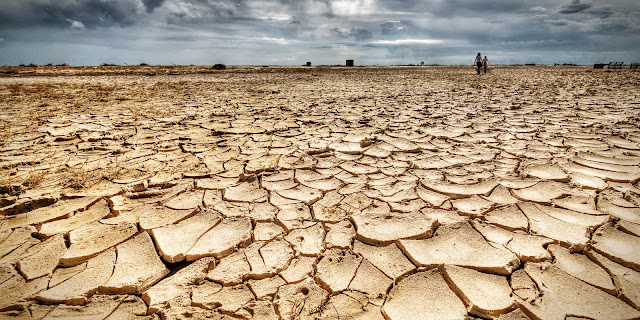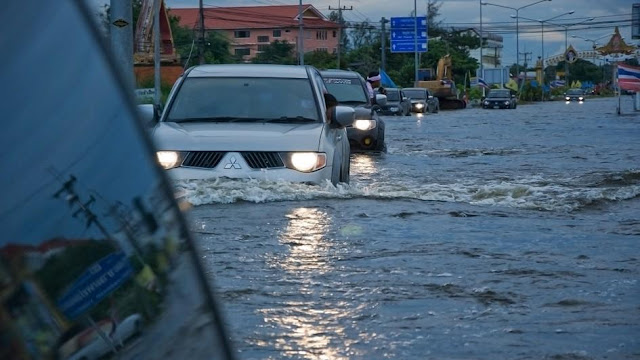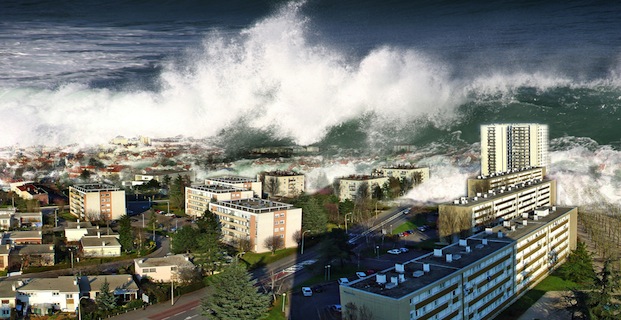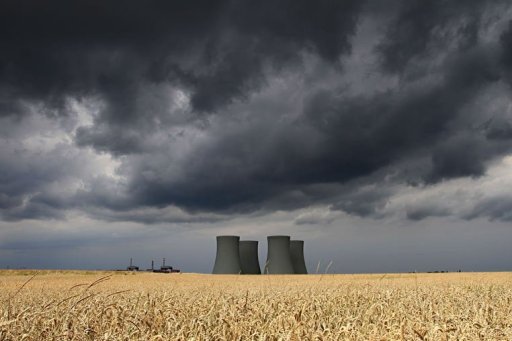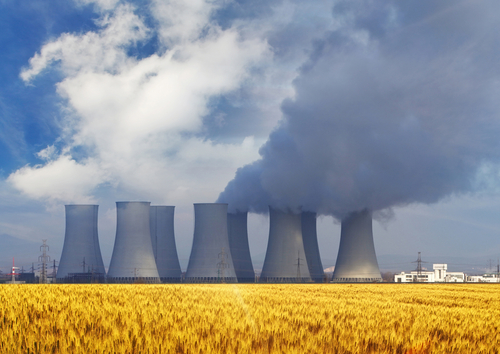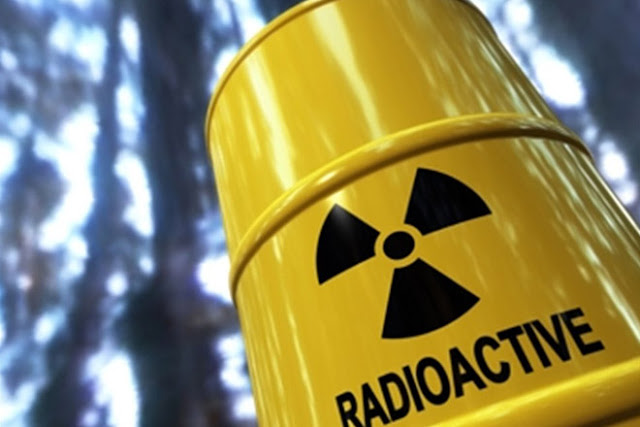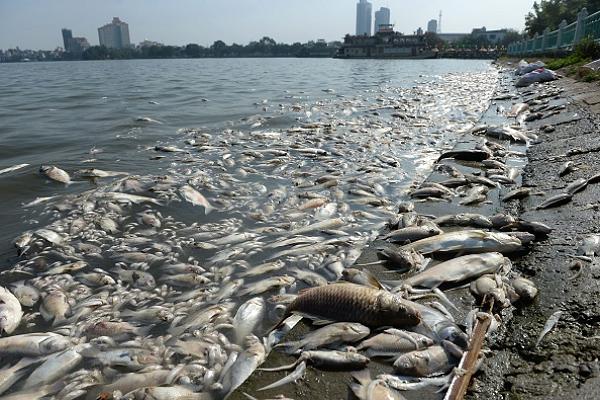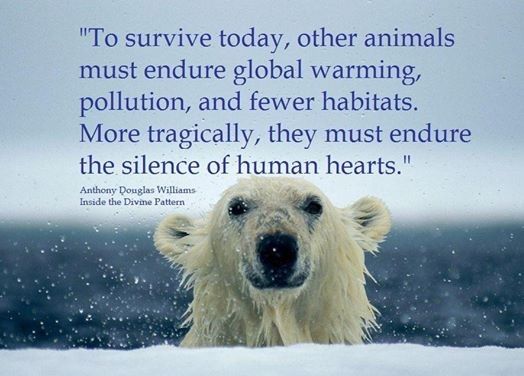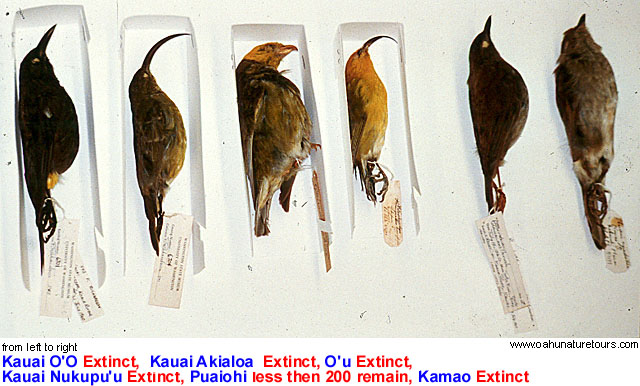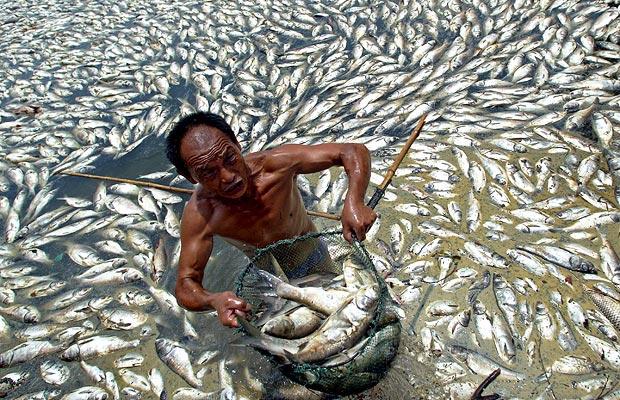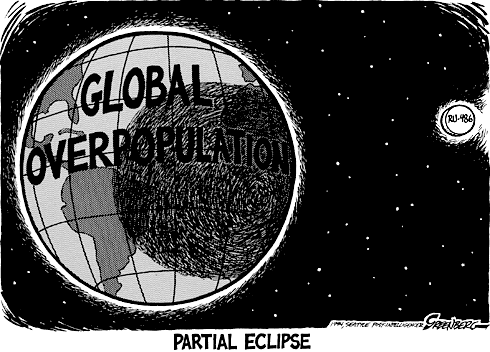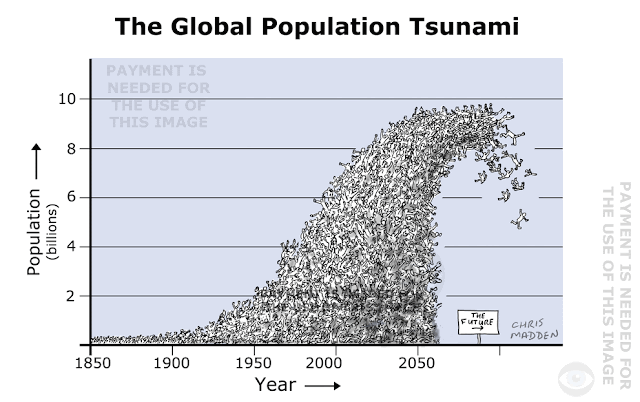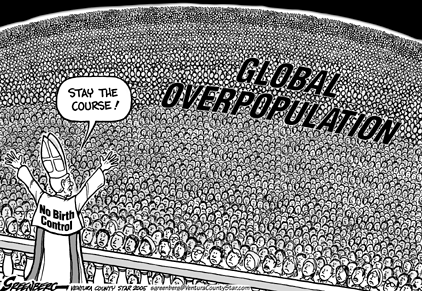The earth’s weather is very mysterious. One day it is sunny the next it is raining. In fact, sometimes as you are driving down the road, you hit the “wall” between a sunny day and a severe thunderstorm. Men have spent years trying to predict weather patterns but it is still an inexact science. This is a list of the most commonly occurring disasters of nature:
10. Landslide
A landslide is a disaster involving elements of the ground, including rocks, trees, parts of houses, and anything else which may happen to be swept up. Landslides can be caused by an earthquake, volcanic eruptions, or general instability in the surrounding land. Mudslides or mudflow, are a special case of landslides, in which heavy rainfall causes loose soil on steep terrain to collapse and slide downwards.
One of the main causes of landslides is gravity. One landslide prevention technique is to change the geometry of the man-made slope to lessen the effects of gravity. When the landslide is surficial (near the earth's surface), the simplest prevention solution to avoid soil and rock fall over the slope are to vegetate it.
One of the main causes of landslides is gravity. One landslide prevention technique is to change the geometry of the man-made slope to lessen the effects of gravity. When the landslide is surficial (near the earth's surface), the simplest prevention solution to avoid soil and rock fall over the slope are to vegetate it.
9. Avalanche
An avalanche is a geophysical hazard involving a slide of a large snow or rock mass down a mountainside, caused when a buildup of material is released down a slope, it is one of the major dangers faced in the mountains in winter. As avalanches move down the slope they may entrain snow from the snowpack and grow in size. The snow may also mix with the air and form a powder cloud. An avalanche with a powder cloud is known as a powder snow avalanche. The powder cloud is a turbulent suspension of snow particles that flows as a gravity current.
People try to predict when avalanches are going to occur. The Alps has an 'avalanche season' between January and March when most avalanches happen. Where avalanches are going to occur is hard to predict. Historical data, weather information and information about the actual snow on the mountainside is collected together to try and forecast the likelihood of an avalanche.
8. Drought
A drought is an extended period of months or years when a region suffers a severe deficiency in its water supply. Generally, this occurs when a region receives consistently below average rainfall. It can have a substantial impact on the ecosystem and agriculture of the affected region. Although droughts can persist for several years, even a short, intense drought can cause significant damage and harm the local economy.Agriculturally, people can effectively mitigate much of the impact of drought through irrigation and crop rotation. Failure to develop adequate drought mitigation strategies carries a grave human cost in the modern era, exacerbated by ever-increasing population densities.
7. Wildfire
Wildfires, or forest fires, are uncontrolled fires burning in wildland areas. Common causes include lightning, human carelessness, arson, volcano eruption, and pyroclastic cloud fro the active volcano. The can be a threat to those in rural areas and also to wildlife. Wildfires can also produce ember attacks, where floating embers set fire to buildings at a distance from the fire itself.6. Flood
A flood is an overflow of an expanse of water that submerges land, a deluge. It is usually due to the volume of water within a body of water, such as a river or lake, exceeding the total capacity of the body, and as a result, some of the water flows or sits outside of the normal perimeter of the body. It can also occur in rivers, when the strength of the river is so high it flows right out of the river channel, usually at corners or meanders.Sea walls and tide gates have been built in some places to prevent tidal waves from pushing the waters up ashore. In some areas too, sand bags are made and placed in strategic areas to retain floodwaters.
5. Tsunami
A tsunami is a series of waves created when a body of water, such as an ocean, is rapidly displaced. Earthquakes, mass movements above or below water, volcanic eruptions and other underwater explosions, landslides, large meteorite impacts comet impacts and testing with nuclear weapons at sea all have the potential to generate a tsunami. A tsunami is not the same thing as a tidal wave, which will generally have a far less damaging effect than a Tsunami.
Tsunamis, like most natural disasters, are beyond human control. There are, however, a number of techniques that can minimize the harmful effects of tsunamis to the physical environment (including built structures) and to individuals and communities. Accompanied by an effective warning system, thoughtful design, and strong community organization can reduce harm from Tsunamis and other natural disasters.
4. Volcano Eruption
A volcanic eruption is a point in which a volcano is active and releases lava and poisonous gasses into the air. They range from daily small eruptions to extremely infrequent supervolcano eruptions (where the volcano expels at least 1,000 cubic kilometers of material.) Some eruptions form pyroclastic flows, which are high-temperature clouds of ash and steam that can travel down mountainsides at speeds exceeding that of an airliner.Be prepared either to shelter or to evacuate. Develop an evacuation plan and a sheltering plan for yourself, your family, and others in your household. Review the plans and make sure that everyone understands them.



